Integrating with Salesforce
Overview
Salesbricks allows you to connect with your Salesforce org so you can:
- Create a new Order in Salesbricks
- Sync metadata from the Salesbricks Order to an associated Opportunity in Salesforce
- Establish a repeatable process for future agreements between you and your customer
In order to successfully integrate Salesforce in Salesbricks, you will need to:
- Connect your Salesforce instance to Salesbricks
- Create the fields in Salesforce needed to host the Salesbricks data
- Map the integration fields in Salesbricks to the Opportunity fields you created in Salesforce
- Test a Salesbricks Order with a test Salesforce Opportunity, and confirm the data is flowing properly
Instructions
Setup a new Salesforce integration instance in Salesbricks
-
In Salesbricks, go to Settings > Integrations and click on Salesforce.
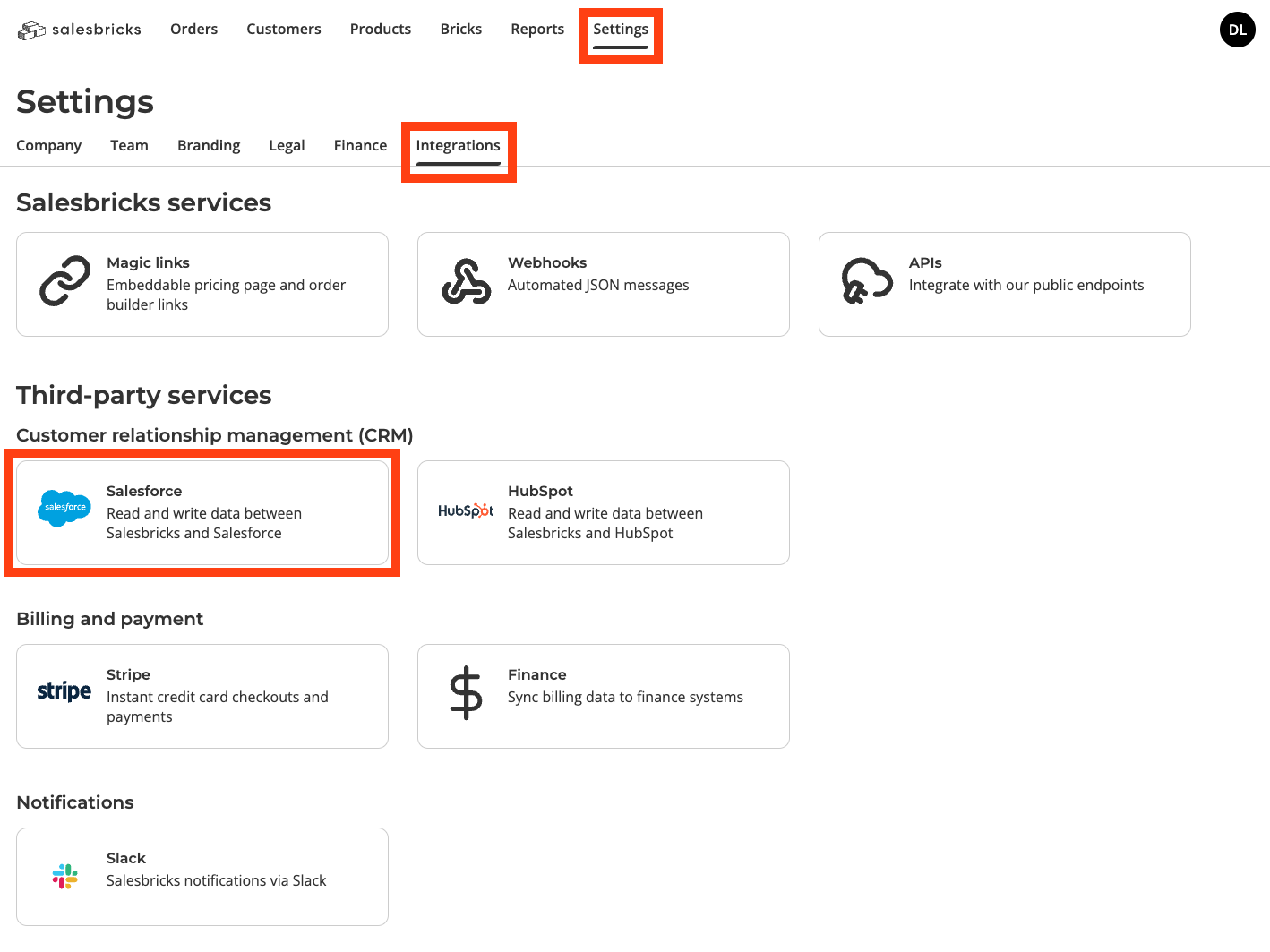
-
If this is your first time connecting Salesforce to Salesbricks, a modal may appear prompting you to reach out to Salesbricks Integration Support for a new integration instance.
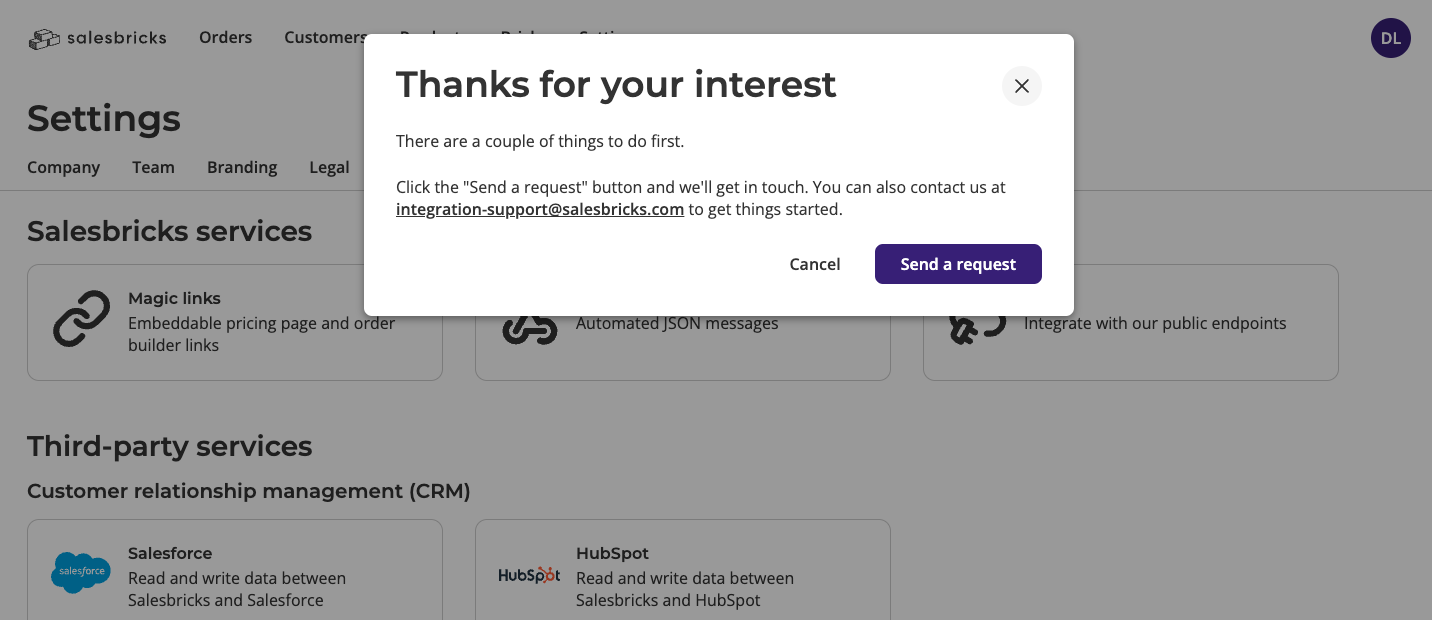
-
Once we notify you to let you know your instance is ready, you may return to the Salesforce page in Salesbricks to begin connecting your integration.
-
In the meantime, you may proceed to the next step of setting up Opportunity fields in Salesforce.
Create the fields in Salesforce needed to host the Salesbricks data
A list of Salesbricks fields, data types, and definitions can be found here.
-
In Salesforce, review the Opportunity fields available in your settings. If needed, you may create custom fields.
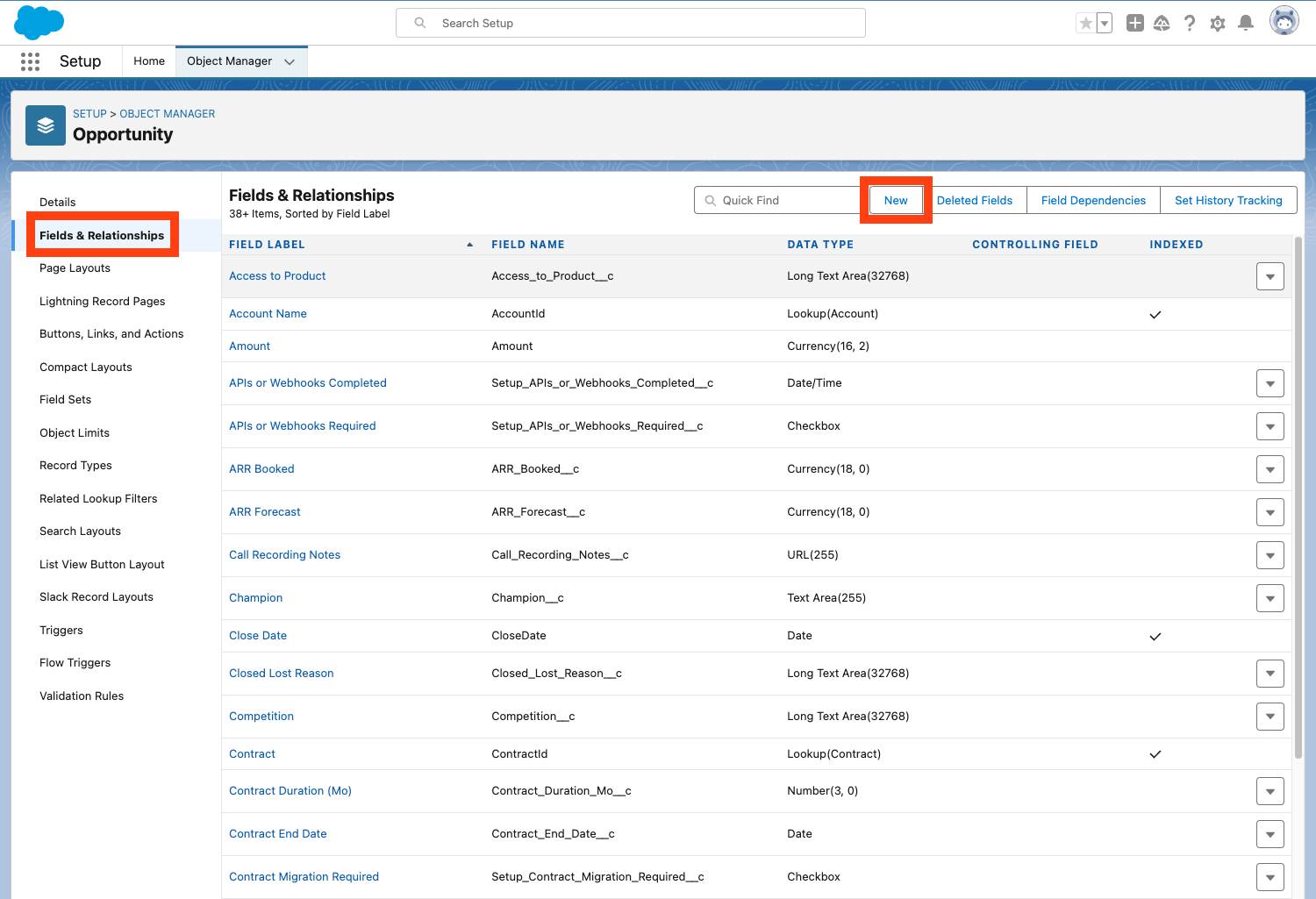
Map the integration fields in Salesbricks to the Opportunity fields you created in Salesforce
-
In Salesbricks, return to the Salesforce page in Settings.
If your integration is ready to configure, you will see a screen prompting you to log in to Salesforce via a sandbox or production account.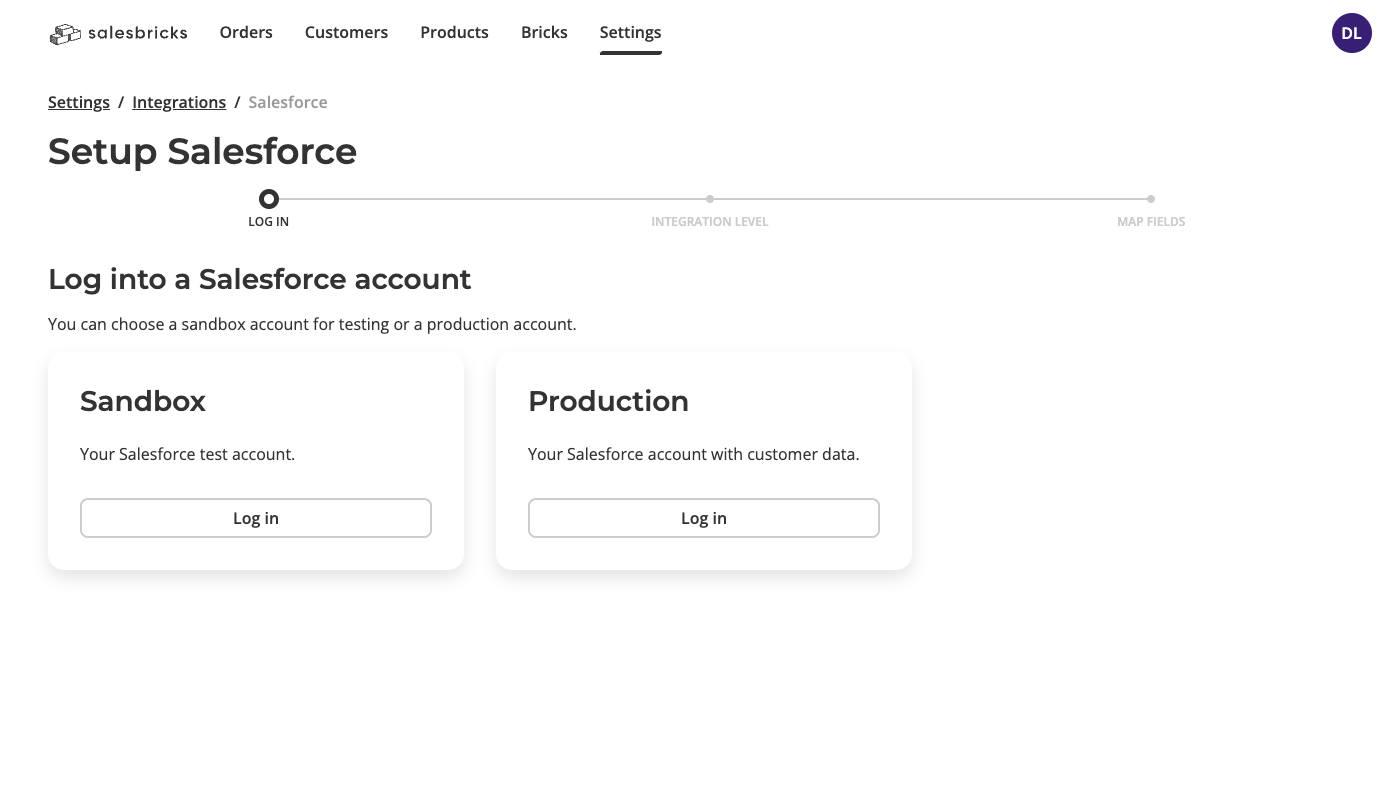
-
After you log in to Salesforce, you will return to Salesbricks where the next screen allows you to select the integration level between your Salesbricks and Salesforce accounts ("Basic" is selected by default).
Select your integration level and click "Next."
-
Map the fields you would like to push from Salesbricks Orders to Salesforce Opportunities.
Click the "Add a field" button to add new rows, or the X icon on the right side of a row to delete it.
Click "Save."
Test a Salesbricks Order with a test Salesforce Opportunity, and confirm the data is flowing properly
-
In Salesforce, create a new Opportunity and save.
-
In Salesbricks, create a new Order.
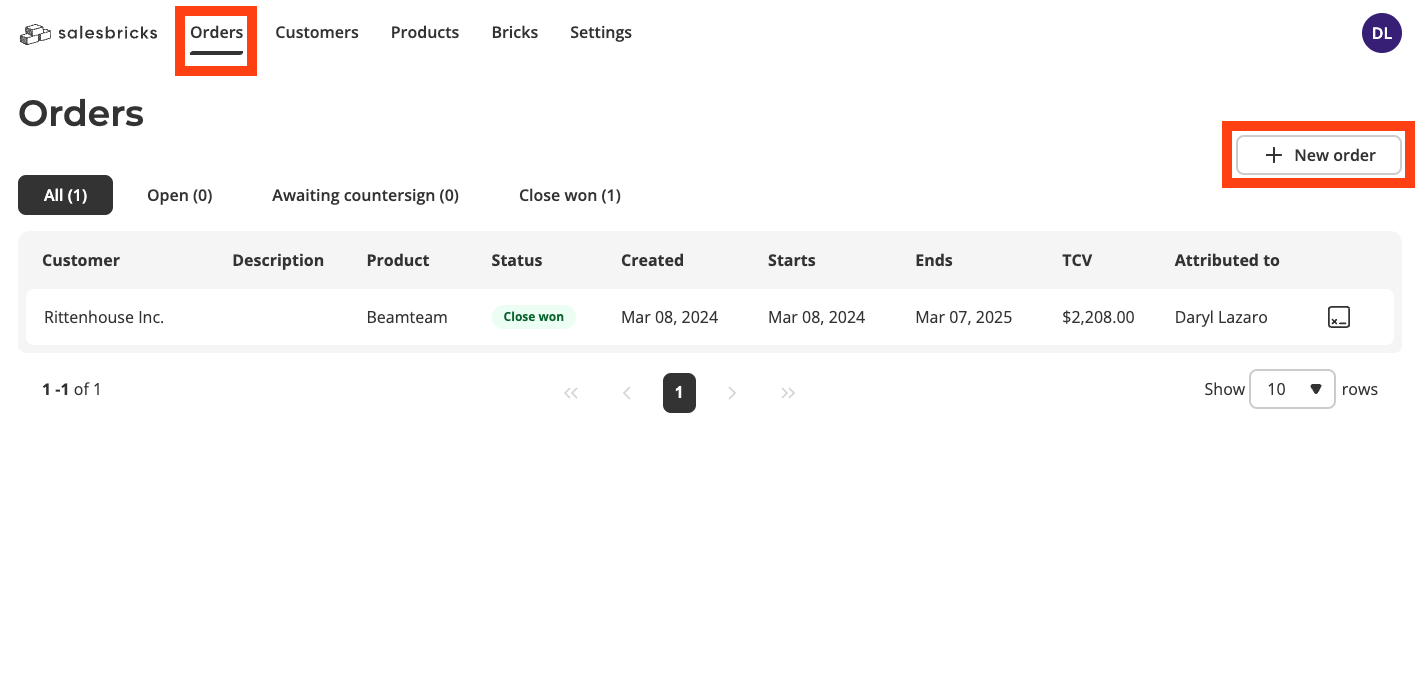
As you build your Order, refer to this document to help you navigate the fields within the Order Builder.
-
In the CRM Account field, search for the Account associated with the Opportunity you created in Salesforce.
Once you find the correct account, the CRM Opportunity field will be populated with all Opportunities associated with that company.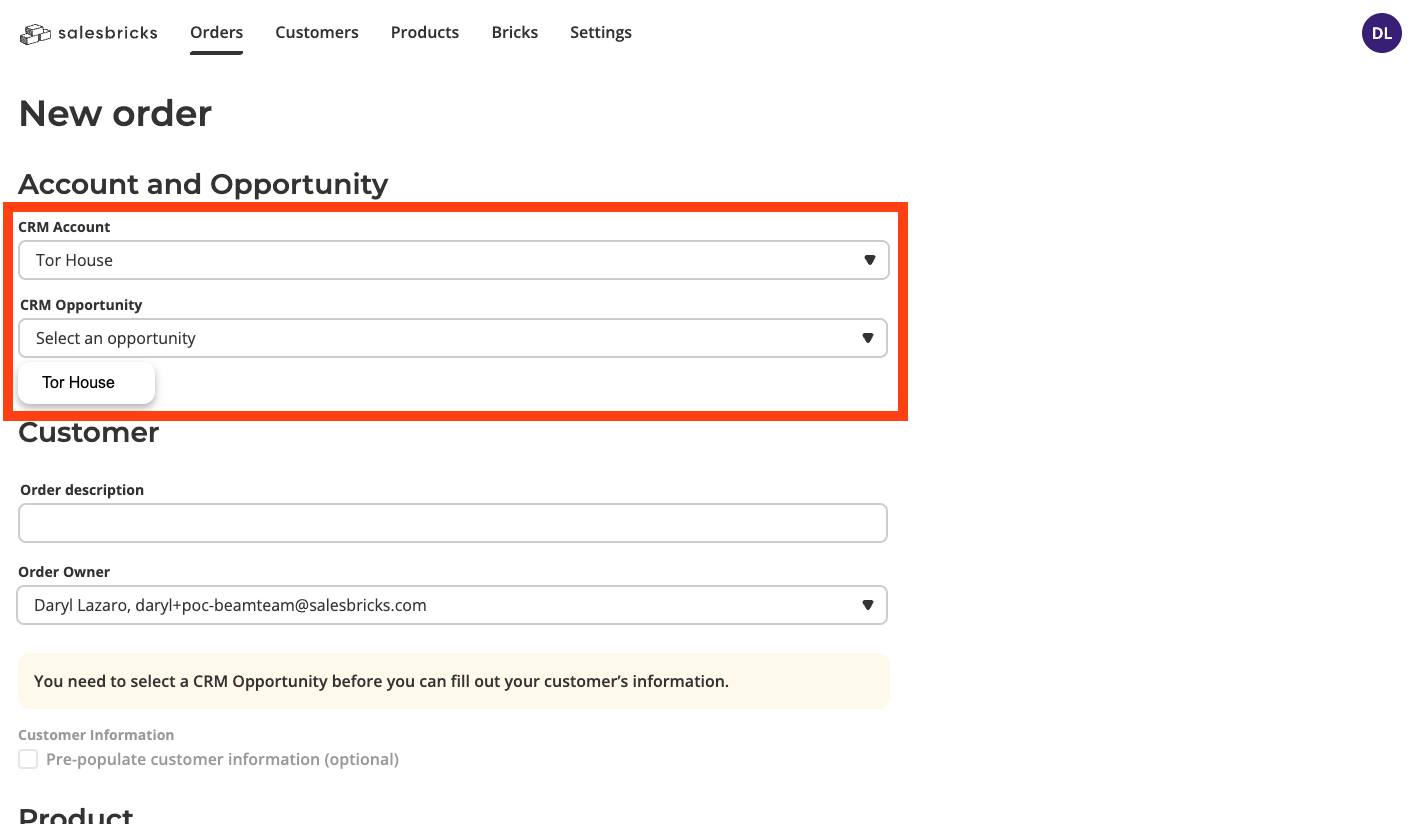
-
After you save the Order, go to Salesforce and verify that the details from the Order were pushed from Salesbricks to the Salesforce Opportunity.
Note that each time the Salesbricks Order is updated, the updates will be synced to the Salesforce Opportunity.
If you have any questions or concerns, feel free to reach out to the Salesbricks Support team via your Slack Connect channel.
Updated 8 days ago
